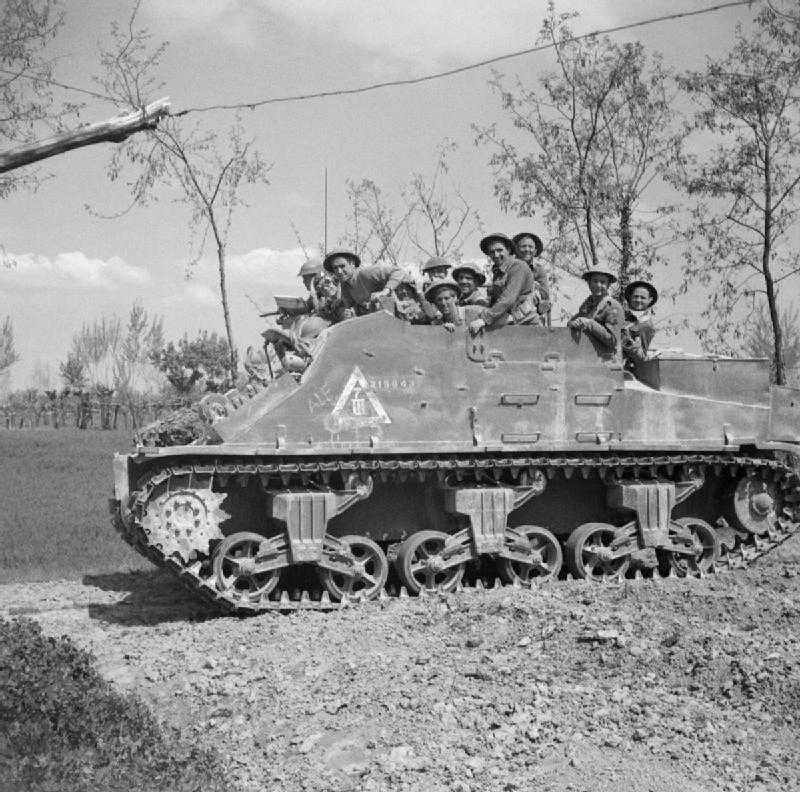
| Year | August 1944 |
| Vehicle Type | Armoured Personnel Carrier |
| Origin & Designer | Canada/REME |
| Numbers Produced | 102 |
| Crew | 1 (Driver) + 20 x Troops |
| Main Armament | 1 x .30 Browning M.1919 Machine Gun |
| Main Armament | [@sponson_traverse] |
| Elevation | [@elevation] |
| Turret Traverse | [@turret_traverse] |
| Gun Traverse | [@gun_traverse] |
| Gun Mount | [@gun_mounts] |
| Maximum Range | [@maximum_range] |
| Armour Penetration | [@armour_penetration] |
| Gun Sight | [@gun_sight] |
| Secondary Armament | [@secondary_armament] |
| Smoke Discharger | [@smoke_discharger] |
| Ammunition Carried | [@ammunition_carried] |
| Height | 2.95m |
| Width | 2.87m |
| Length | 6.02m |
| Combat Weight | 22.970 kg |
| Ground Clearance | 0.43m |
| Fording Depth | 1.01m |
| Trench Crossing | 2.30m |
| Obstacle Clearance | 0.61m |
| Climbing Ability | 30° |
| Radio | No. 19 Set |
| Armour | Hull Front: 51mm. Hull Sides: 38mm. Hull Rear: 13mm. Hull Top: 25mm. Hull Bottom: 13mm. |
| Engine | Continental R975 C1 (Petrol) |
| Transmission | 5 Forward & 1 Reverse |
| Maximum Road Range | 193 km |
| Maximum Cross Country Range | 140 km |
| Maximum Water Range | [@maximum_water_range] |
| Maximum Road Speed | 40 kph |
| Maximum Cross Country Speed | 24 kph |
| Maximum Water Speed | [@maximum_water_speed] |
| Variants | [@variants] |
| Notes | The early versions of the Kangaroo were really M7 priests stripped of their main armament. This came about when the Canadian army asked for a vehicle to not only transport infantry at tank speed but allow for protection against enemy fire. These priests were vehicles that were withdrawn from Canadian artillery regiments and were due to be replaced by either towed 25 pdrs or Sextons. The first 72 were converted and these were split in two batches of 36 vehicles and issued to both the Canadians and British units during operation Totalize. Another four were kept in reserve. The priest kangaroo served from only August to October 1944 and were replaced by the Ram Kangaroo. |